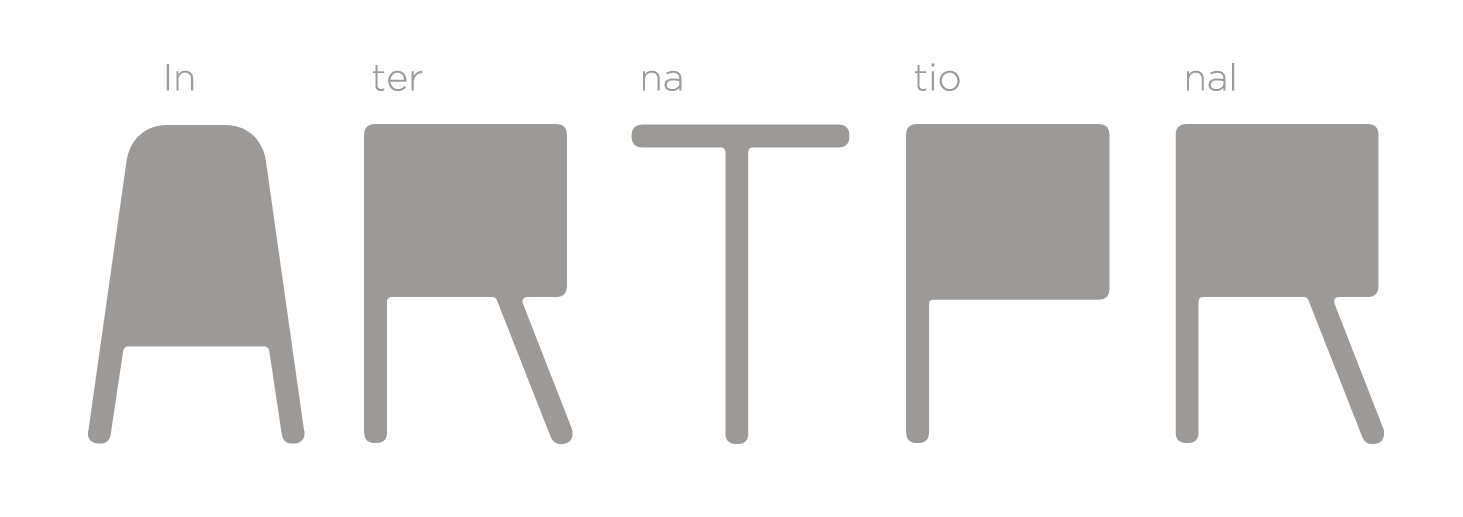Vladimir Weisberg. Enamored of Art Classics. IN ARTIBUS Foundation, Moscow
The new art space of the IN ARTIBUS foundation opens with an exhibition dedicated to the 90th anniversary of Vladimir Weisberg (1924-1985).
The exhibition includes eighty-eight works by Vladimir Weisberg: paintings, drawings and watercolours of all periods. The majority of works will be displayed in Moscow for the first time. These include one of his earliest works 'Balloon in the twilight' (1944, private collection) that has never been exposed, 'Woman in front of a mirror' (1956, private collection) painted virtually in the tradition of Jack of Diamonds, and the proverbial “Oranges in black papers on black table” (1961, private collection) last time displayed at the Manege exhibition of 1962 where Khrushchev was dispatching the non-conformists. Some works from museums are also shown for the first time.
The organisers of the exhibition put main emphasis on the artist's so called white period of 1970-1980s. By the beginning of the 70s, he had ultimately formed the genres of his work, and the iconography becomes familiar: a still life with white objects, a portrait, a nude; dissolving edges of the objects in a self-sufficient space “purified” from everything unnecessary.
In the last 30 years, in Moscow there were held only four exhibitions of the artist, not to mention those group and thematic. Artist's bibliography includes museum catalogues, a monographic study and publications in periodical; such calm way of existence generally belongs to acknowledged masters, though this is not a reason to drop the subject.
In the context of Russian art, Weisberg is always a standalone, not fitting into the frames of profaned official art and finding little connection points with his fellow non-conformists. “A wall is the only thing in common between me and my contemporaries”, said the artist preparing for a Moscow Artists Union exhibition. A colourist in general, he was repulsed by the process of art being reduced to a sign whatever its function: semantic, symbolic or aesthetic.
The difficulty of perception of Weisberg's painting has given a birth to a number of simplifying, “signal” definitions: “Moscow metaphysician”, “Russian Morandi”, “white on white”. All of them have to do with the outer sides of his art; while giving a name they do not denote. The truth is closer: Vladimir Weisberg is an artist of tradition, his art been bound with the strict rules of classic painting, his only programme being the study of its laws. Connection with the art of his famous older contemporaries is turned by Weisberg into showing his broadest painting diapason with the example of iconography of modern art. His famous “white” is a consequence of stunning complication of inter-colour relations. Weisberg’s only manifesto as a painter by vocation, temperament and lifestyle were his words: “I study the palette of colours”.
Weisberg's painting is the case when one is not able to get a true picture of the subject matter using only the information about a work, either its description or reproduction: they must see it with their own eyes. Therefore, every exhibition is always of high importance. IN ARTIBUS' Art Space (designed by Eugene Asse) is intended to showing the art of this very kind. A bright room with high windows close to one another is the perfect environment for adequate perception of painting, which is known to be created in the daylight.
A monograph by Elena Khlopina "In love with classical art. Painting of V. G. Weisberg in tradition of colourism", which gave the name to the exhibition, will be presented at the opening ceremony. This book, published in 2009 by originators of the IN ARTIBUS foundation, includes among other things: theoretical Weisberg's chart "Classification of the main types of colour perception", an interview with the artist and a catalogue raisonné of his works.
Consultant to the exhibition was a Moscow artist Boris Kasatkin. Because of his constant communication with Weisberg (1966 to 1985) and an unprecedentedly careful analysis of his work, the curators of the exhibition believe that Kasatkin is a competent researcher of master's painting system and the most reliable source of biographical information.
Curators of the exhibition: Elena Rudenko, Elena Khlopina
Project Director: Ekaterina Kondranina
Consultant: Boris Kasatkin
The exhibition includes eighty-eight works by Vladimir Weisberg: paintings, drawings and watercolours of all periods. The majority of works will be displayed in Moscow for the first time. These include one of his earliest works 'Balloon in the twilight' (1944, private collection) that has never been exposed, 'Woman in front of a mirror' (1956, private collection) painted virtually in the tradition of Jack of Diamonds, and the proverbial “Oranges in black papers on black table” (1961, private collection) last time displayed at the Manege exhibition of 1962 where Khrushchev was dispatching the non-conformists. Some works from museums are also shown for the first time.
The organisers of the exhibition put main emphasis on the artist's so called white period of 1970-1980s. By the beginning of the 70s, he had ultimately formed the genres of his work, and the iconography becomes familiar: a still life with white objects, a portrait, a nude; dissolving edges of the objects in a self-sufficient space “purified” from everything unnecessary.
In the last 30 years, in Moscow there were held only four exhibitions of the artist, not to mention those group and thematic. Artist's bibliography includes museum catalogues, a monographic study and publications in periodical; such calm way of existence generally belongs to acknowledged masters, though this is not a reason to drop the subject.
In the context of Russian art, Weisberg is always a standalone, not fitting into the frames of profaned official art and finding little connection points with his fellow non-conformists. “A wall is the only thing in common between me and my contemporaries”, said the artist preparing for a Moscow Artists Union exhibition. A colourist in general, he was repulsed by the process of art being reduced to a sign whatever its function: semantic, symbolic or aesthetic.
The difficulty of perception of Weisberg's painting has given a birth to a number of simplifying, “signal” definitions: “Moscow metaphysician”, “Russian Morandi”, “white on white”. All of them have to do with the outer sides of his art; while giving a name they do not denote. The truth is closer: Vladimir Weisberg is an artist of tradition, his art been bound with the strict rules of classic painting, his only programme being the study of its laws. Connection with the art of his famous older contemporaries is turned by Weisberg into showing his broadest painting diapason with the example of iconography of modern art. His famous “white” is a consequence of stunning complication of inter-colour relations. Weisberg’s only manifesto as a painter by vocation, temperament and lifestyle were his words: “I study the palette of colours”.
Weisberg's painting is the case when one is not able to get a true picture of the subject matter using only the information about a work, either its description or reproduction: they must see it with their own eyes. Therefore, every exhibition is always of high importance. IN ARTIBUS' Art Space (designed by Eugene Asse) is intended to showing the art of this very kind. A bright room with high windows close to one another is the perfect environment for adequate perception of painting, which is known to be created in the daylight.
A monograph by Elena Khlopina "In love with classical art. Painting of V. G. Weisberg in tradition of colourism", which gave the name to the exhibition, will be presented at the opening ceremony. This book, published in 2009 by originators of the IN ARTIBUS foundation, includes among other things: theoretical Weisberg's chart "Classification of the main types of colour perception", an interview with the artist and a catalogue raisonné of his works.
Consultant to the exhibition was a Moscow artist Boris Kasatkin. Because of his constant communication with Weisberg (1966 to 1985) and an unprecedentedly careful analysis of his work, the curators of the exhibition believe that Kasatkin is a competent researcher of master's painting system and the most reliable source of biographical information.
Curators of the exhibition: Elena Rudenko, Elena Khlopina
Project Director: Ekaterina Kondranina
Consultant: Boris Kasatkin
Vladimir Weisberg. Enamored of Art Classics. IN ARTIBUS Foundation, Moscow
The new art space of the IN ARTIBUS foundation opens with an exhibition dedicated to the 90th anniversary of Vladimir Weisberg (1924-1985).
The exhibition includes eighty-eight works by Vladimir Weisberg: paintings, drawings and watercolours of all periods. The majority of works will be displayed in Moscow for the first time. These include one of his earliest works 'Balloon in the twilight' (1944, private collection) that has never been exposed, 'Woman in front of a mirror' (1956, private collection) painted virtually in the tradition of Jack of Diamonds, and the proverbial “Oranges in black papers on black table” (1961, private collection) last time displayed at the Manege exhibition of 1962 where Khrushchev was dispatching the non-conformists. Some works from museums are also shown for the first time.
The organisers of the exhibition put main emphasis on the artist's so called white period of 1970-1980s. By the beginning of the 70s, he had ultimately formed the genres of his work, and the iconography becomes familiar: a still life with white objects, a portrait, a nude; dissolving edges of the objects in a self-sufficient space “purified” from everything unnecessary.
In the last 30 years, in Moscow there were held only four exhibitions of the artist, not to mention those group and thematic. Artist's bibliography includes museum catalogues, a monographic study and publications in periodical; such calm way of existence generally belongs to acknowledged masters, though this is not a reason to drop the subject.
In the context of Russian art, Weisberg is always a standalone, not fitting into the frames of profaned official art and finding little connection points with his fellow non-conformists. “A wall is the only thing in common between me and my contemporaries”, said the artist preparing for a Moscow Artists Union exhibition. A colourist in general, he was repulsed by the process of art being reduced to a sign whatever its function: semantic, symbolic or aesthetic.
The difficulty of perception of Weisberg's painting has given a birth to a number of simplifying, “signal” definitions: “Moscow metaphysician”, “Russian Morandi”, “white on white”. All of them have to do with the outer sides of his art; while giving a name they do not denote. The truth is closer: Vladimir Weisberg is an artist of tradition, his art been bound with the strict rules of classic painting, his only programme being the study of its laws. Connection with the art of his famous older contemporaries is turned by Weisberg into showing his broadest painting diapason with the example of iconography of modern art. His famous “white” is a consequence of stunning complication of inter-colour relations. Weisberg’s only manifesto as a painter by vocation, temperament and lifestyle were his words: “I study the palette of colours”.
Weisberg's painting is the case when one is not able to get a true picture of the subject matter using only the information about a work, either its description or reproduction: they must see it with their own eyes. Therefore, every exhibition is always of high importance. IN ARTIBUS' Art Space (designed by Eugene Asse) is intended to showing the art of this very kind. A bright room with high windows close to one another is the perfect environment for adequate perception of painting, which is known to be created in the daylight.
A monograph by Elena Khlopina "In love with classical art. Painting of V. G. Weisberg in tradition of colourism", which gave the name to the exhibition, will be presented at the opening ceremony. This book, published in 2009 by originators of the IN ARTIBUS foundation, includes among other things: theoretical Weisberg's chart "Classification of the main types of colour perception", an interview with the artist and a catalogue raisonné of his works.
Consultant to the exhibition was a Moscow artist Boris Kasatkin. Because of his constant communication with Weisberg (1966 to 1985) and an unprecedentedly careful analysis of his work, the curators of the exhibition believe that Kasatkin is a competent researcher of master's painting system and the most reliable source of biographical information.
Curators of the exhibition: Elena Rudenko, Elena Khlopina
Project Director: Ekaterina Kondranina
Consultant: Boris Kasatkin
The exhibition includes eighty-eight works by Vladimir Weisberg: paintings, drawings and watercolours of all periods. The majority of works will be displayed in Moscow for the first time. These include one of his earliest works 'Balloon in the twilight' (1944, private collection) that has never been exposed, 'Woman in front of a mirror' (1956, private collection) painted virtually in the tradition of Jack of Diamonds, and the proverbial “Oranges in black papers on black table” (1961, private collection) last time displayed at the Manege exhibition of 1962 where Khrushchev was dispatching the non-conformists. Some works from museums are also shown for the first time.
The organisers of the exhibition put main emphasis on the artist's so called white period of 1970-1980s. By the beginning of the 70s, he had ultimately formed the genres of his work, and the iconography becomes familiar: a still life with white objects, a portrait, a nude; dissolving edges of the objects in a self-sufficient space “purified” from everything unnecessary.
In the last 30 years, in Moscow there were held only four exhibitions of the artist, not to mention those group and thematic. Artist's bibliography includes museum catalogues, a monographic study and publications in periodical; such calm way of existence generally belongs to acknowledged masters, though this is not a reason to drop the subject.
In the context of Russian art, Weisberg is always a standalone, not fitting into the frames of profaned official art and finding little connection points with his fellow non-conformists. “A wall is the only thing in common between me and my contemporaries”, said the artist preparing for a Moscow Artists Union exhibition. A colourist in general, he was repulsed by the process of art being reduced to a sign whatever its function: semantic, symbolic or aesthetic.
The difficulty of perception of Weisberg's painting has given a birth to a number of simplifying, “signal” definitions: “Moscow metaphysician”, “Russian Morandi”, “white on white”. All of them have to do with the outer sides of his art; while giving a name they do not denote. The truth is closer: Vladimir Weisberg is an artist of tradition, his art been bound with the strict rules of classic painting, his only programme being the study of its laws. Connection with the art of his famous older contemporaries is turned by Weisberg into showing his broadest painting diapason with the example of iconography of modern art. His famous “white” is a consequence of stunning complication of inter-colour relations. Weisberg’s only manifesto as a painter by vocation, temperament and lifestyle were his words: “I study the palette of colours”.
Weisberg's painting is the case when one is not able to get a true picture of the subject matter using only the information about a work, either its description or reproduction: they must see it with their own eyes. Therefore, every exhibition is always of high importance. IN ARTIBUS' Art Space (designed by Eugene Asse) is intended to showing the art of this very kind. A bright room with high windows close to one another is the perfect environment for adequate perception of painting, which is known to be created in the daylight.
A monograph by Elena Khlopina "In love with classical art. Painting of V. G. Weisberg in tradition of colourism", which gave the name to the exhibition, will be presented at the opening ceremony. This book, published in 2009 by originators of the IN ARTIBUS foundation, includes among other things: theoretical Weisberg's chart "Classification of the main types of colour perception", an interview with the artist and a catalogue raisonné of his works.
Consultant to the exhibition was a Moscow artist Boris Kasatkin. Because of his constant communication with Weisberg (1966 to 1985) and an unprecedentedly careful analysis of his work, the curators of the exhibition believe that Kasatkin is a competent researcher of master's painting system and the most reliable source of biographical information.
Curators of the exhibition: Elena Rudenko, Elena Khlopina
Project Director: Ekaterina Kondranina
Consultant: Boris Kasatkin



